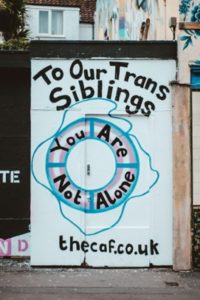Transphobia is a deep-rooted form of discrimination that affects many people around the world. It is a form of bigotry that can be expressed in numerous ways, from verbal and physical abuse to exclusion and microaggressions. Despite its prevalence, however, many people do not know how to deal with transphobia in everyday life. This comprehensive guide will provide an overview of transphobia and how to respond to it in a variety of situations. It will explore the different ways in which transphobia can manifest, the importance of creating a safe and inclusive environment, and the various strategies that can be used to combat transphobia. Through this guide, readers will gain the knowledge and confidence to respond to transphobia in their everyday lives.
What is transphobia?
Transphobia is a deep-rooted form of discrimination against transgender people, or people who do not identify with their sex assigned at birth. It can be expressed through numerous actions, behaviors, words, and phrases that target transgender people, such as intentional misgendering, denying someone’s gender identity, or denying services to someone because of their gender identity. Transphobia can come from both cisgender and transgender people and can be either implicit or explicit. Transphobia can sometimes be a result of fear and lack of understanding about the transgender community. It can also be rooted in an individual’s own prejudice towards transgender people or beliefs that society has ingrained into their consciousness. Transphobia has tragic consequences, manifesting in a number of ways, including a higher risk of experiencing discrimination at work, school, or other places of socialization; having lower self-esteem; having a higher risk of psychological distress such as anxiety or depression; having a higher risk of experiencing suicidal ideation; and having a higher risk of being the victim of violence.
Strategies for combating transphobia
Transphobia can be combated in numerous ways. Educate yourself and others on the experiences of transgender people. Learning more about the issues that transgender people face will help you support them better. This can be done through reading blogs or books written by transgender people, attending events hosted by transgender organizations, or talking to transgender people about their experiences. Another method to help combat transphobia is by creating safe spaces. A safe space is a place that is free from discrimination and harassment. It is a space where everyone can feel comfortable and accepted for who they are. Lastly, be mindful of the language that you use. Don’t be afraid to correct someone for saying something offensive. Try to be conscious of the pronouns that you use when referring to others, such as saying “they” and “them” before knowing someone’s preferred pronouns.
Creating a safe and inclusive environment
Transgender people often face many struggles as a result of transphobia. This can make it challenging for them to access basic services such as health care and housing. It can also make it more difficult for them to be successful in their career or education. In order to help transgender people overcome these struggles, we must create a safe and inclusive environment for them. This means taking steps to ensure that your community and workspaces are safe and accessible for transgender people. This includes creating policies that prohibit discrimination and harassment on the basis of gender identity and providing services that meet the needs of transgender people. Creating a safe and inclusive environment benefits everyone who falls below the poverty line by making them feel welcome, safe, and supported.
How to support those affected by transphobia
There are many ways that you can support someone who is experiencing transphobia. The first thing you can do is be an active listener. This means letting the person know that you are listening to their story and that you are there for them. Being an active listener can help to reduce the person’s feelings of isolation, as well as give them the opportunity to voice their experiences, which can be helpful in processing their emotions. This can encourage a sense of community, solidarity, and compassion. Active listening can be done through asking open-ended questions that encourage the person to speak freely, such as “What happened?” or “What do you want me to know?”.
Resources and support networks
If you are experiencing transphobia, there are many resources and support networks you can use. The following are some of the most useful ones:
- National LGBTQ Alliance – They are a network of organizations that provide support, education, and advocacy for the LGBTQ community.
- Human Rights Campaign – An organization that aims to end discrimination against the LGBTQ community and others who face discrimination based on their identity.
- Gender Spectrum – A website that offers information and support for transgender youth and their parents.
These are just a few of the many support networks that are available for people who experience transphobia. With these resources, you can get the support you need and feel empowered to stand up to transphobia.
Do you or someone you know deal with transphobia? Did you find this article helpful? We’d love to know what you think! Email us at glambmarketing@gmail.com or message us on our Facebook page. And be sure to check out more great tips and articles on our blog!



